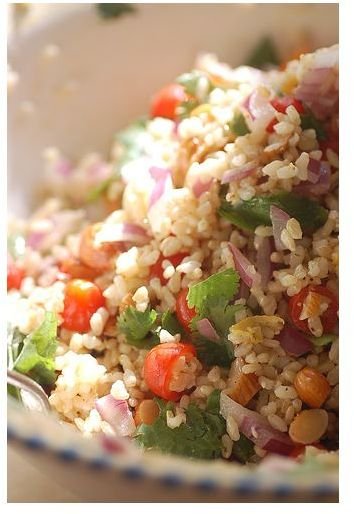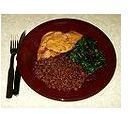What Is the Healthiest Rice to Eat?
The World Loves Rice
Rice is one of the world’s most important food staples, feeding one-third of the world population. It is a nutritious grain when minimally-processed, rich in vitamins, minerals, amino acids, and fiber. It is also easy to cook with, delicious, and extremely versatile, working well as a side dish, mixed with vegetables, fish, or meat, made into puddings, added to salads and soups, and even used to make sushi. While rice is healthy, what is the healthiest rice to eat? There are so many different types, which ones have the most health benefits and why are they superior in terms of nutritional value?
Brown Rice
If looking for a nutrient-rich, high-fiber type of rice, look no further than traditional, unrefined brown rice. Brown rice is not only one of the most beneficial rice choices available, it is one of the healthiest foods that you can include in your diet. Why is brown rice so good for you? Because it is almost completely intact; the hull, or outermost layer is removed, but the bran layer and germ is left alone. This creates a grain that is incredibly high in fiber, with about fourteen percent of the daily requirement of dietary fiber in one cup of cooked rice. High fiber foods promote healthy digestion, heart health, and weight loss.
What about nutritional value? This healthy rice is packed with vitamins, minerals, and amino acids that white rice does not possess. In fact, white rice is actually fortified with much of its nutrients to replace some of the beneficial compounds that are removed when the grain is

processed. Brown rice is an excellent source of tryptophan, magnesium, selenium, B vitamins, and manganese. It is also a good source of amino acids and essential fatty acids, making it a much more well-rounded food source. Brown rice is a cleansing food, a strengthening food, and an alkalizing food. It does take time to prepare, about an hour where white rice takes about twenty minutes, and it has a chewy texture and nutty flavor.
Black Rice
An equal in terms of nutritional value to brown rice is black rice, also known as forbidden rice. This whole grain rice is a deep purple color and has a sticky texture and a nutty taste with chocolate tones. It is also very high in fiber, vitamins, minerals, amino acids, and anthocyanins, which act as protective antioxidants in the body. There are more anthocyanins in black rice then in the dark purple super fruit, blueberries. Because of the high content of antioxidants black rice may be an important food for preventing cancer and promoting cardiovascular health.
Wild Rice
While only a cousin to true rice, because of its high nutritional content wild rice is one of the healthiest types of rice. Wild rice also grows in shallow water but it was not originally cultivated like true rice. Today this wild grass is cultivated. It is also high in nutrients, but with more protein then most grains. It is also a good source of B vitamins, folate, potassium, calcium, iron, and magnesium. While wild rice has denser concentrations of these vitamins and minerals then brown rice, it is not as high in dietary fiber.
Red Rice

Red rice is a short-grain variety that is native to Bhutan, which is a kingdom in the Himalayas. This type of rice is unique in that it has a bright red color, an earthy, rich flavor, and a high concentration of minerals due to being irrigated with glacier water. High in amino acids, red rice is a good source of protein, as well as fiber, iron, zinc, and magnesium.
What is the healthiest rice to eat? All types, even the different varieties of white rice, do supply the body with complex carbohydrates and some nutrients. The less processed, more natural and more dynamically flavored brown, black, and red rice are all incredibly beneficial as they are excellent sources of fiber, protein, vitamins, minerals, and even some essential fatty acids. WIld rice, which is technically a wild grass, is also one of the healthiest types of rice that you can choose, as it is very high in protein and has a higher concentration of some nutrients then the most nutritious true rice choices. Try all of these healthy grains. They are just as easy to cook with, more intensely flavored, and they are incredibly good for you.
References
“Rice: History & Types of Rice.” (The NIbble) https://www.thenibble.com/reviews/Main/rice/rice-glossary.asp
World’s Healthiest Foods https://www.whfoods.com/genpage.php?tname=foodspice&dbid=128#nutritionalprofile
Von Radowitz, John. “Scientists hail health benefits of black rice.” (August 27, 2010, The Independent) https://www.independent.co.uk/life-style/health-and-families/health-news/scientists-hail-health-benefits-of-black-rice-2063064.html
Vegetarians in Paradise https://www.vegparadise.com/highestperch311.html
photo by Dennis Meuller
photo by Jules Stonesoup
photo by Steve
